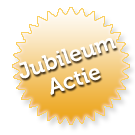Teach an old dog new tricks and Create more new NOWS.
In November 2008 i was at The World Creativity forum. (http://www.flandersdc.be/en) I love going to events and seminars, especially when innovative people are there.
To re-invent yourself, to really grow and expand your awareness, to be innovative and creative; you have got to do something ‘out of the ordinary’ or ‘get inspiration from people who do or see something completely different’. You might as well do every day something that you have not done before… small approaches change the bigger picture. And start with leaning something new, like playing the piano or painting. I did not know Tom Kelly he spoke at the forum. He opened the value of Anthropologists approaches and came with the word: Vuja dé … as I later found out … again.
In plain English you would call it: phenomenology. Lao Tse, Heraclitus , Proust and many others were before him. but he re- introduced the term in a functional way… as a prescription in the business or life context.
Bob Sutton at Stanford calls ” Vuja dé.” Vuja de happens when you enter a situation you’ve been in a thousand times before, but with the sense of being there for the first time. Marcel Proust, “The real act of discovery consists not in finding new lands but in seeing with new eyes.” So if you want to find untapped innovation opportunities, watch the world around you with “fresh eyes.”
You do not have to be the first to invent the ‘stuff’, just bring it to use in a context or machine as a prescription for improvement in an original way. An Opportunity.
Steve Jobs was a Tweaker, there are less nice explanations of the word but one of them is: Someone who constantly makes slight alterations on (usually a very specific) object, i.e. computer, software, automobile, etc. He was the big ‘re-inventer’, in that sense a pioneer. Glawell about it in the New Yorker. http://www.newyorker.com/reporting/2011/11/14/111114fa_fact_gladwell
Another popular word is Lifehacker : curates tips, tricks, and technology for living better in the digital age. Using what is out there in a new way!
Carlos Castaneda comes with words or personalities: the King, Warrior, Magician, Lover as points of view to look at life. Also, describing the faces of life… with fear, clarity, power, old age. http://www.prismagems.com/castaneda/donjuan1.html
So use your skills, imagination, creativity by re-using what is out there. There are possibilities in every field of research and life. Notice that you want to serve. Serve to make life easier and nicer for others. Let your focus be on serving and re-inventing by acknowledging the value of the work of other and adding you interpretation on it.
Serve! and Observe!
Tom Kelly comes with the ten faces of innovations. Although the text is somewhat loner I leave it as it is. Not because is it good or bad, just to stimulate your thinking… This is advanced modeling: pick out what you need and bring it to use… for others and therefore for you
Observe and Serve
http://www.tenfacesofinnovation.com/tenfaces/index.htm
The Learning Personas;
Individuals and organizations need to constantly gather new sources of information in order to expand their knowledge and grow, so the first three personas are learning roles. These personas are driven by the idea that no matter how successful a company currently is, no one can afford to be complacent. The world is changing at an accelerated pace, and today’s great idea may be tomorrow’s anachronism. The learning roles help keep your team from becoming too internally focused, and remind the organization not to be so smug about what you “knowâ€. People who adopt the learning roles are humble enough to question their own worldview, and in doing so they remain open to new insights every day.
The Anthropologist is rarely stationary. Rather, this is the person who ventures into the field to observe how people interact with products, services, and experiences in order to come up with new innovations. The Anthropologist is extremely good at reframing a problem in a new way, humanizing the scientific method to apply it to daily life. Anthropologists share such distinguishing characteristics as the wisdom to observe with a truly open mind; empathy; intuition; the ability to “see” things that have gone unnoticed; a tendency to keep running lists of innovative concepts worth emulating and problems that need solving; and a way of seeking inspiration in unusual places.
The Experimenter celebrates the process, not the tool, testing and retesting potential scenarios to make ideas tangible. A calculated risk-taker, this person models everything from products to services to proposals in order to efficiently reach a solution. To share the fun of discovery, the Experimenter invites others to collaborate, while making sure that the entire process is saving time and money.
The Cross-Pollinator draws associations and connections between seemingly unrelated ideas or concepts to break new ground. Armed with a wide set of interests, an avid curiosity, and an aptitude for learning and teaching, the Cross-Pollinator brings in big ideas from the outside world to enliven their organization. People in this role can often be identified by their open mindedness, diligent note-taking, tendency to think in metaphors, and ability to reap inspiration from constraints.
The Organizing Personas
The next three personas are organizing roles, played by individuals who are savvy about the often counter-intuitive process of how organizations move ideas forward. At IDEO, we used to believe that the ideas should speak for themselves. Now we understand what the Hurdler, the Collaborator, and the Director have known all along: that even the best ideas must continuously compete for time, attention, and resources. Those who adopt these organizing roles don’t dismiss the process of budget and resource allocation as “politics†or “red tape.†They recognize it as a complex game of chess, and they play to win.
The Hurdler is a tireless problem-solver who gets a charge out of tackling something that’s never been done before. When confronted with a challenge, the Hurdler gracefully sidesteps the obstacle while maintaining a quiet, positive determination. This optimism and perseverance can help big ideas upend the status quo as well as turn setbacks into an organization’s greatest successes—despite doomsday forecasting by shortsighted experts.
The Collaborator is the rare person who truly values the team over the individual. In the interest of getting things done, the Collaborator coaxes people out of their work silos to form multidisciplinary teams. In doing so, the person in this role dissolves traditional boundaries within organizations and creates opportunities for team members to assume new roles. More of a coach than a boss, the Collaborator instills their team with the confidence and skills needed to complete the shared journey.
The Director has an acute understanding of the bigger picture, with a firm grasp on the pulse of their organization. Subsequently, the Director is talented at setting the stage, targeting opportunities, bringing out the best in their players, and getting things done. Through empowerment and inspiration, the person in this role motivates those around them to take center stage and embrace the unexpected.
The Building Personas
The four remaining personas are building roles that apply insights from the learning roles and channel the empowerment from the organizing roles to make innovation happen. When people adopt the building personas, they stamp their mark on your organization. People in these roles are highly visible, so you’ll often find them right at the heart of the action.
The Experience Architect is that person relentlessly focused on creating remarkable individual experiences. This person facilitates positive encounters with your organization through products, services, digital interactions, spaces, or events. Whether an architect or a sushi chef, the Experience Architect maps out how to turn something ordinary into something distinctive—even delightful—every chance they get.
The Set Designer looks at every day as a chance to liven up their workspace. They promote energetic, inspired cultures by creating work environments that celebrate the individual and stimulate creativity. To keep up with shifting needs and foster continuous innovation, the Set Designer makes adjustments to a physical space to balance private and collaborative work opportunities. In doing so, this person makes space itself one of an organization’s most versatile and powerful tools.
The Storyteller captures our imagination with compelling narratives of initiative, hard work, and innovation. This person goes beyond oral tradition to work in whatever medium best fits their skills and message: video, narrative, animation, even comic strips. By rooting their stories in authenticity, the Storyteller can spark emotion and action, transmit values and objectives, foster collaboration, create heroes, and lead people and organizations into the future.
The Caregiver is the foundation of human-powered innovation. Through empathy, they work to understand each individual customer and create a relationship. Whether a nurse in a hospital, a salesperson in a retail shop, or a teller at an international financial institution, the Caregiver guides the client through the process to provide them with a comfortable, human-centered experience.


